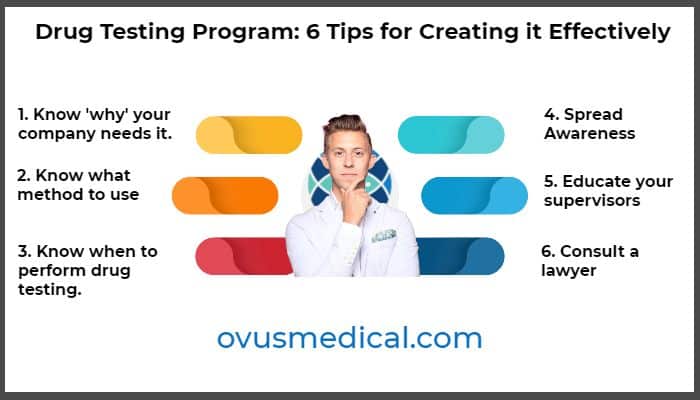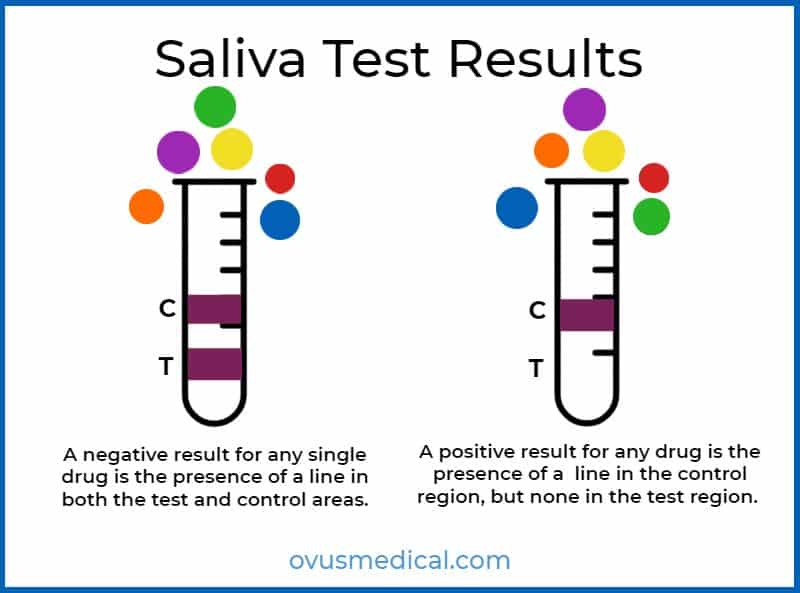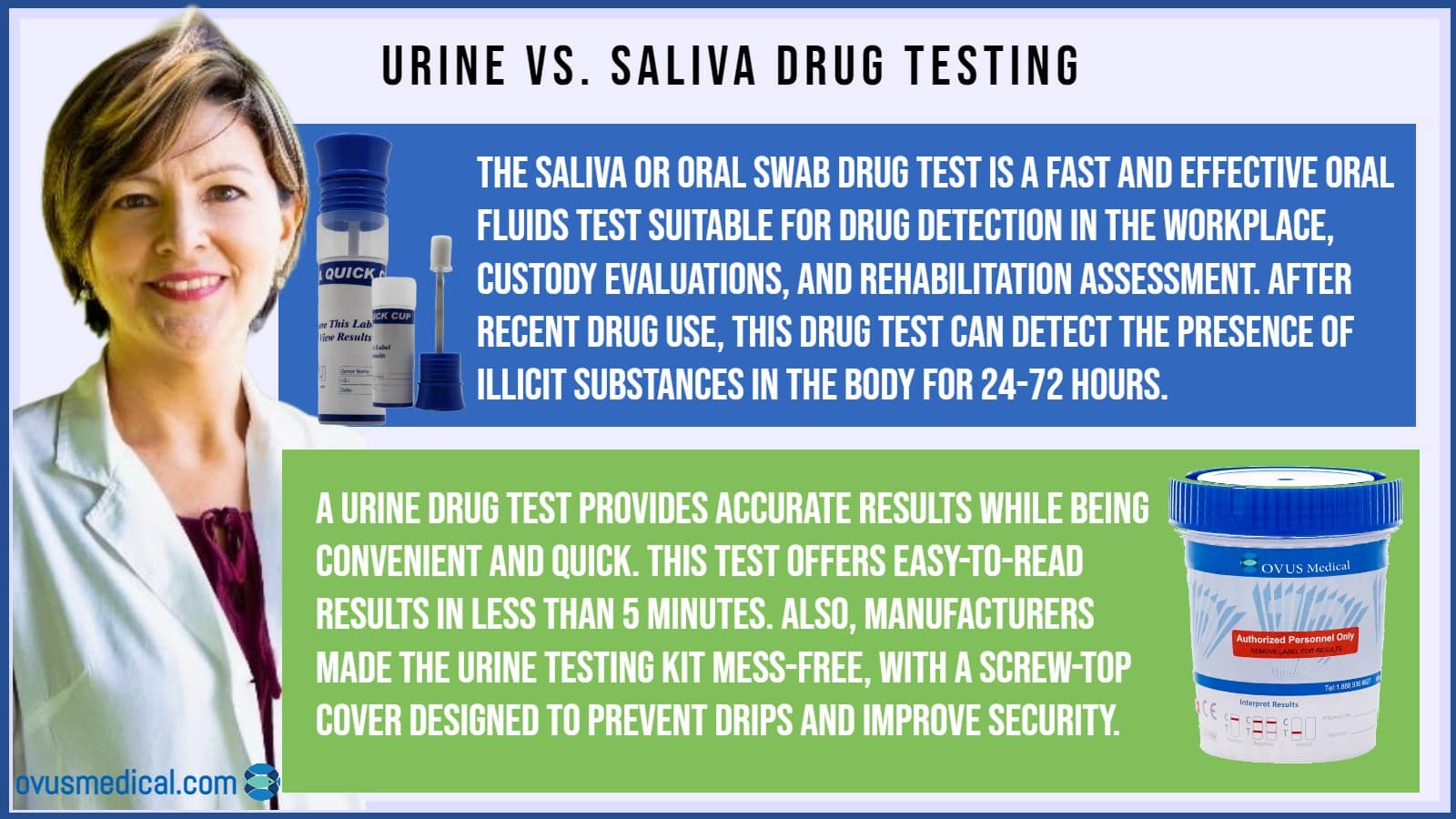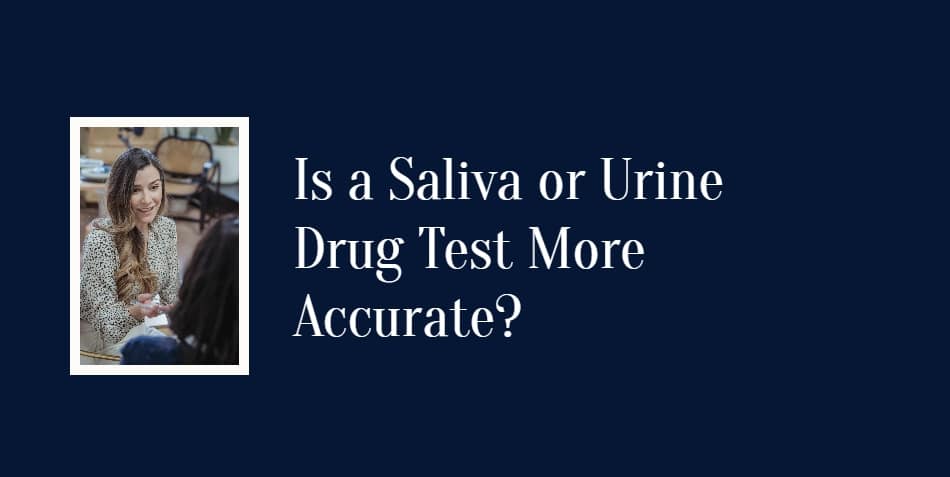Saliva or Urine Drug Test Accuracy Compared, Which Is More Accurate, Saliva or Urine Drug Test? If you’re an employer looking to implement a company drug testing policy, it’s essential to know your available testing options: saliva or urine.
But which one do you use and why? Is a saliva or urine drug test more accurate? Understanding how each drug test works is imperative to successfully conduct the most appropriate and relevant drug testing policy in your workplace.
In this article, we will cover everything you need to know about urine tests and saliva tests (also known as oral fluid tests) so that you can confidently select the right one for you.

The Difference Between a Saliva and Urine Drug Test
There are a few differences and similarities between urine and saliva drug tests, each with pros and cons. While urine still the most commonly used test, the advancements in saliva oral swabs have come a long way, causing them to gain more and more popularity for their simplicity, accuracy, and convenience. Let’s discuss each in more detail.
Rapid Urine Testing
Urine tests are the most common type of test administered by employers, and a urine drug test will show the existence of any substance in the donor’s system, even after the substance effects have worn off.
These tests typically come in test cups and can screen for between five and eighteen different substances. This gives you a range of options depending on what you want to screen for.
10-Panel drug tests typically used in a workplace setting. These 10-panel tests screen will for amphetamine (AMP), barbiturate (BAR), buprenorphine (BUP), cocaine (COC), marijuana (THC), MDMA (MDMA/Molly), methadone (MTD), methamphetamine (MET), opiates (OPI/MOR), and oxycodone (OXY).
Learn drug test abbreviations here.

How Are Urine Tests Administered?
Although using a urine testing kit, you will need a gender-specific invigilator and a private restroom; the test administered with these easy steps:
- Put the date on the label and have the donor initial it
- The donor deposits a urine specimen in the cup and seals the cap
- Start timer immediately
- The operator checks the cap for tightness and removes the peel off label
- Check the strip label 4-5 minutes after the timer began
- Green will appear to indicate the temperature of the sample (the correct range is 90-100 degrees F)
- The result are revealed by either one band in the control region (positive) or two bands in both the control and test region (negative).
Results should not be read after one hour. A single band in the test (T) region indicates an invalid test.
How Reliable Are Urine Drug Tests?
While it’s noteworthy that no drug test of this type can be 100% accurate but, if conducted correctly, the urine drug test accuracy can be close to 99%. Regardless, it’s important to note that certain factors could interfere with the accuracy of the results. Accuracy can be affected by:
- how the test is administered
- the way the test was stored
- how the urine sample was stored
- what the donor consumed beforehand (i.e., food, drink)
- any other prescribed drugs the donor may be taking already
- testing for the wrong drugs
- missing the drug’s window of detection
When a positive result is returned, sending the sample off to a lab for further testing is vital, as some prescribed medications can produce a false-positive, most commonly for amphetamines.
Rapid Saliva Testing
Rapid saliva testing, also known as Rapid Oral Fluid Testing, is quickly gaining popularity for several reasons. For example, collecting a saliva sample can be 100% monitored, whereas monitoring a urine sample collection becomes a little more complex.
Additionally, where urine samples require the drug to metabolize in the system in order to be detected (typically 6-12 hours), oral swabs can detect recent substance abuse. Because of this, it is the ideal choice whenever the need to detect recent usage is paramount.
How Is an Oral Swab Test Administered?
Another reason oral swabs are becoming more popular is that they are so easy to use. All swab tests conducted using the same fundamental steps:
- Insert the sponge end of the test stick into the mouth for between three and five minutes to collect a sample
- Ensure swab soaked in saliva for most accurate results
- Insert collection stick vertically into the test tube and seal the lid
- Keeping the test tube vertical, read the results after ten minutes of closing the tube’s lid
- The result revealed by either one band in the control region (positive) or two bands in both the control and test region (negative).
Results should not read after eight minutes. A single band in the test (T) region indicates an invalid test.
How Reliable Are Saliva Drug Tests?
If conducted correctly, the drug testing swab test accuracy is close to 98%; however, there are a couple of things that could interfere with the accuracy of the test, such as:
- the type of test used
- the quality of the test
- the substance type
- the substance’s concentration
- the skill of the person administering the test
- the testing facility
- the test being administered during the correct timing window

Is a Saliva or Urine Drug Test More Accurate?
While comparing the two types of tests is like comparing apples with oranges, it’s safe to say the following:
- Traditionally, lab testing will yield the most accurate results
- Urine and blood tests are more accurate
- A urine drug test can be close to 99% accurate
- A saliva drug test can be close to 98% accurate
Cut-Off Concentration Levels
The guidelines set by SAMHSA to determine drug abuse state there has to be cut-off concentrations for both urine and oral swab tests. This level established to determine when a test will return as positive or negative, depending on the amount of substance found in the user’s system.
Cut-off concentration levels are represented in nanograms per milliliter (ng/mL) and differ from drug to drug.
Window of Detection
It’s essential to know how long a drug can remain in the user’s system so you can administer the test at the right time for the most accurate results. However, several factors can cause detection times to change, such as metabolism, weight, tolerance, frequency of use, and quantity of use.
Let’s review the detection periods of some of the most commonly tested for drugs:
- Amphetamines
- Abbreviation: AMP
- Detection period: 1-2 days
- Cut-Off Level: 50ng/mL
- Barbiturates
- Abbreviation: BAR
- Detection period: 1-4 days
- Cut-Off Level: 50ng/mL
- Benzodiazepines
- Abbreviation: BZO
- Detection period: 1-2 days
- Cut-Off Level: 50ng/mL
- Buprenorphine
- Abbreviation: BUP
- Detection period: 2-6 days
- Cut-Off Level: 10ng/mL
- Cocaine
- Abbreviation: COC
- Detection period: 2-4 days
- Cut-Off Level: 20ng/mL
- Morphine
- Abbreviation: OPI
- Detection period: 2-4 days
- Cut-Off Level: 40ng/mL
- Marijuana
- Abbreviation: THC
- Detection period: 5+ days
- Cut-Off Level: 50ng/mL
- Methamphetamine
- Abbreviation: MET
- Detection period: 2-4 days
- Cut-Off Level: 50ng/mL
- Oxycodone
- Abbreviation: OXY
- Detection period: 1-3 days
- Cut-Off Level: 20ng/mL
- Phencyclidine
- Abbreviation: PCP
- Detection period: 7-14 days
- Cut-Off Level: 10ng/mL

Overview at a Glance: Saliva vs. Urine Tests
To make things a bit easier, let’s go over some of the pros and cons at a glance. We will be comparing both types of tests to more easily note the differences.
Urine:
- Pros:
- Preliminary results are provided by qualitative screening
- Remains the most accepted standards of drug testing with the broadest range of testing options
- Can test for both illegal drugs and prescribed medications
- Has a longer window of detection time once the substance has metabolized
- Fast and accurate results in typically 5 minutes or less
- Cons:
- Does not detect recent drug use (only detects after 6-12 hours)
- Requires a private restroom
- Requires donor to have a full bladder to participate
- Can require gender-specific staff to administer or observe
- Unpleasant to handle
- Non-observed sample collection introduces the possibility of contamination, substitution, dilution, or another such tampering
Saliva:
- Pros:
- Preliminary results are provided by qualitative screening
- Ideal for situations where recent drug use needs to screened for
- Non-invasive and does not require much privacy
- No requirement of a full bladder to participate
- Can administered by any gender staff
- Less unpleasant to handle
- Is ideal for detecting recent use of substances
- Due to 100% monitored, there is no chance of tampering
- Fast and accurate results in typically 10 minutes or less
- Cons:
- Shorter window of detection
- Limited number of drugs can tested via oral swabs
Make Your Selection Today
Knowing the appropriate drug test to administer in various settings is vital if you want everything to run swiftly and professionally. When asking “is a saliva or urine drug test more accurate” the ultimate takeaway is that both types of tests will yield reasonably accurate results.
In both cases, any positive results should sent to a lab for further analysis before any formal decisions concerning the donor.
If you’re looking for accurate test kits, we have both oral swabs and urine tests ranging from 5-panel through to 18-panel. Visit our shop to find the ideal test for your needs. Bulk orders are also available.
Purchase Drug Tests Here

